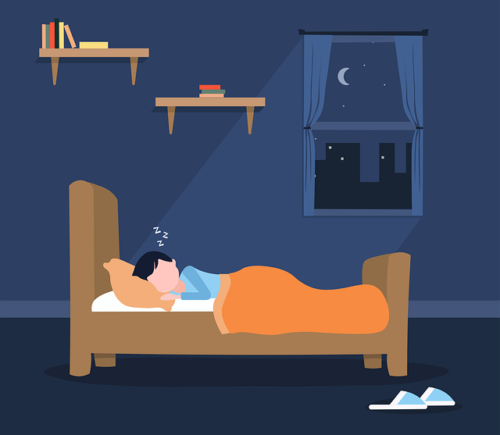You might be preparing to wear something green this Friday (March 17) to celebrate all things Irish as part of St Patrick’s Day.
But did you know it’s also World Sleep Day?
It’s a global awareness event held annually and is hosted by the World Sleep Society.
Intended to be a celebration of all things sleep, it also addresses important issues and “aims to lessen the burden of sleep problems on society through better prevention and management of sleep disorders”.
This year’s theme is ‘sleep is essential for health’.

A good night’s sleep can do wonders for your physical, mental, and emotional wellbeing.
Not getting enough sleep can affect all aspects of your life, from feeling grumpy to being physically unwell.
There’s been a great deal of research around how much sleep a person should get, with the answer often being somewhere between seven and nine hours for an adult.
Dr Clete Kushida, the President of the World Sleep Society says he’s often asked what the ‘perfect’ amount of sleep is:
“The short answer is at least 7 hours in length, but a truly restorative sleep depends on duration as well as continuity and depth. Understanding the impact of sleep on physical and mental health is more important than ever before.”
How many times have you gone to bed feeling nicely tired and then once in bed ‘ping’ you feel wide awake and your mind is thinking through the day, or a conversation, or even something that happened years ago?
The Sleep Health Foundation suggests going to bed and getting up at a consistent time helps to form a strong sleep-wake cycle.
Other tips include having a buffer zone of about an hour to do something relaxing before you go to bed, and avoid caffeine, alcohol and eating large meals close to bedtime.
Meditation can also be a useful tool in this situation, here are a few techniques you can try:
A mindful meditation where you bring your focus to the present moment and on your senses. If you are in a darken room – you might just like to focus on what you can hear, smell and feel. Noticing the pillow behind your head and neck, the texture, the smell, how does it feel? The weight of the bed clothes, any clothes you might be wearing, the bed itself beneath your body. Sounds you can hear in the room, elsewhere in the building and sounds outside.
Following and counting your breath. You can use a breathwork technique – counting your in-breath to say three or four, and counting your out-breath to the same number. Because this focuses on your breathing it can help to soothe and relax you and is likely to be more effective than counting sheep!
A full body scan and relaxation. Starting at either your head or feet and gently moving your attention from one part of your body to the next, letting go of any tention or tightness as you move through. At each point you might like to take a few breaths focusing on breathing in relaxtion, and breathing out any tension or tightness.
If you find it hard to guide yourself with these techniques, there are numerous apps you can try for a guided meditation, or search for some soft, calming meditation music on YouTube.
Here’s to getting a good night’s sleep.
Ann 🙏
